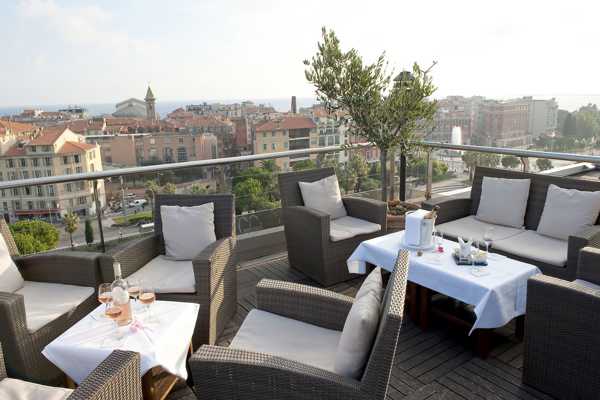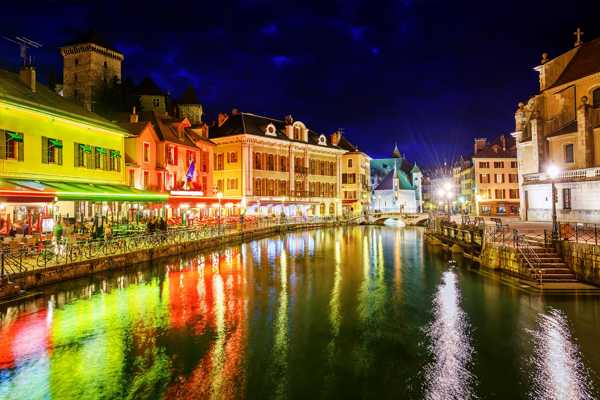Picking the best UNESCO World Heritage Sites isn’t an easy task. With over 2,000 years of history, you can bet that there’s a good choice of historical landmarks in France.
All the UNESCO World Heritage sites listed below are well worth seeing. They are all unique, beautiful, and historically important. Being spread around the 6 corners of the ‘Hexagon’ (1 of France’s nicknames) means that one of them may be near your next destination. Get ready for a virtual journey back in time in a country as famous for its architectural and engineering prowess as it is for its wines and gastronomy.
- 1
The Mont-Saint-Michel
One of the most emblematic landmarks in France

- History
- Photo
- Unusual
The Mont-Saint-Michel is a unique and stunning island just off the coast of Normandy, in the northwest of France. This one-of-a-kind island dates back to the 8th century. Built for protection, it’s never been conquered, thanks to the tide reputed for “changing as swiftly as a galloping horse” (according to Victor Hugo).
A visit to the Mont-Saint-Michel will take you back to the middle ages. As you stroll along the narrow, cobbled alleys, you’ll spot the Abbey, a fortress, a prison, and other signs from lives lived here long time ago. You can find a handful of accommodation options on the island so do book well in advance if you want to stay overnight.
Map - 2
The banks of the River Seine in Paris
Flowing through the long history of France's capital city

- Couples
- History
- Photo
The UNESCO listed section of the banks of the Seine River stretches for 3 miles (5 km), from the Eiffel Tower in the west to Notre-Dame Cathedral in the east. Lined with stunning landmarks such as the Louvre Museum, the Grand Palais, and the City Hall, the Seine riverside is a huge open-air museum in the heart of Paris.
You can enjoy the riverside views from land or by booking a romantic boat tour. At the book, poster, and post card stalls dotting the streets by the river, you can find unique souvenirs to take home. There are many hotels conveniently located along the River Seine for the best and most romantic views.
Map - 3
Carcassonne Walled City
A city established over 2,000 years ago

- Couples
- History
- Photo
Founded by the Visigoths on a pre-Roman settlement during the 5th century, the walled city of Carcassonne is an impressive sight. This fortified city is strategically located in the southwest of France, between the Atlantic Ocean and the Mediterranean Sea. Entirely restored in the mid-19th century, it showcases stunning ancient design, workmanship, and way of life.
Besides the fortifications and castle of the medieval Old Town, the city has a bustling market and a large number of interesting museums to visit. Carcassonne warmly welcomes visitors throughout the year, and it gets really busy during the summer months.
Map - 4
Palace and Park of Versailles
The residence of the last King of France

- Couples
- History
- Photo
The opulent palace and stunning park of Versailles sit are known as the last residence of the last king of France, Louis XVI. The palace is a true regal work of art built by the best artisans of the 17th century. Walking through the incredible Hall of Mirrors and beautiful gardens feel like strolling through a fairy tale castle.
The Versailles palace and gardens are located about 12.5 miles (20 km) southwest of the Paris city center and are perfect for a day trip destination. Hop on a train at the Austerlitz station and you’ll reach the gates of Versailles in just about 40 minutes.
Map - 5
Chartres Cathedral
One of the most impressive cathedrals in France

- History
- Photo
Considered a masterpiece of French Gothic art and architecture, Chartres Cathedral dates back to the end of the 12th century. Located around 50 miles (80 km) southwest of Paris, it’s famous for its tall spires, which respectively reach up to 345 (105) and 370 ft (113 meters). The size and beauty of its stained-glass windows is also remarkable.
You can do a self-guided tour around the Cathedral but to really delve into the amazing history of this magnificent building, get the audio guide or book a guided tour. And the train ride from Paris to Chartres is an experience in its own right.
Location: 16 Cloître Notre Dame, 28000 Chartres, France
Map - 6
Historical center of Avignon
A former Papal seat

- History
- Photo
Settled on the banks of the Rhône River, in the southeast of France, the historical center of Avignon is full with stunning architectural monuments. Avignon is a beautiful walled city renowned for its status as the home of the Pope during the 14th century. This left the city with spectacular edifices that include the Papal Palace and Notre-Dame des Doms Cathedral.
Another of Avignon’s UNESCO-listed architectural monuments is the Saint-Bénézet Bridge, which is celebrated in the famous French nursery rhyme ‘Sur le pont d’Avignon’. You easily reach all Avignon’s famous sights on foot, so pack your best walking shoes and get ready for an adventure.
Map - 7
Arles' Roman and Romanesque Monuments
Formidable remains of the Roman Empire

- Couples
- History
- Photo
Arles’ Roman and Romanesque monuments date back to the time as a provincial capital of ancient Rome. Sat on the banks of the Rhône River, Arles was established in 800 BC by the Ligurians, and then concurred by the Romans. The Roman reign left the city with an impressive number of historical monuments, including Arles Amphitheater, the Thermes of Constantine, the Church of Saint-Trophime, to name just a few.
Today this vibrant city is a lively hub for culture, festivals, art, and gastronomy. Arles is located between Montpellier and Marseilles on the French Riviera.
Map - 8
Canal du Midi
A picturesque historic canal

- History
- Photo
Stretching for 150 miles (240 km) between Toulouse and the Étang de Thau, the Canal du Midi links the Atlantic Ocean to the Mediterranean Sea in the southwest of France. It’s also known as the canal of the two seas. Built at the end of the 17th century, it’s a remarkable feat of civil engineering. Originally built to transport goods such as wheat, it’s now the most popular canal for leisure boaters in France.
The high quality of construction that went into the locks, aqueducts, and buildings has ensured that the Canal du Midi, the oldest canal in Europe, is still functioning. The charming villages and towns along the canal are great for sightseeing and stocking up on fresh produce.
Map - 9
Port of the Moon in Bordeaux
A timeless masterpiece

- Couples
- History
- Photo
The spectacular Port of the Moon in Bordeaux owes its name to the crescent shape of the River Garonne in the center of city. This vibrant city and its port have grown together throughout 2,000 years of history to an important commercial hub in the southwest of France.
Today, the riverbanks are dotted with many historical buildings and landmarks, such as the Place de la Bourse. Here you can enjoy a leisurely stroll timeless and beautiful surroundings and find plenty of charming cafés and restaurants to rest your feet after a long day of sightseeing.
Map - 10
Pont du Gard
A well-preserved 3-tier arched bridge

- History
- Photo
The Pont du Gard (the Gard River Bridge) is a stunning Roman aqueduct built around 19 BC, located 12.5 miles (20 km) northeast of Nimes. It’s one of the highest aqueduct structure in the world. The purpose of this Roman engineering masterpiece was to provide Nimes with fresh water.
Today, just a few yards from the Pont du Gard, there’s one of France’s largest discovery centers on Roman engineering where you can learn the whole story of the ancient aqueduct of Nîmes. Explore models, full-scale reconstructions, and multimedia screens to immerse yourself into the fascinating Roman history.
Map



















